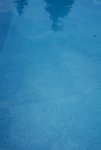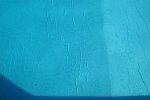Ok, I'm freaking out. I finally got through my CYA-Ammonia-superchlorination drama on my 16x34 5-year-old inground vinly pool, gotten all the numbers good, pool sparkling, and a couple of days ago I noticed a few bubbles in the liner. Small, low, barely noticeable. Today I looked, and either there are a lot more, or the light made them very visible. They seem to be everywhere, in no discernable pattern. just evenly distrubuted about the pool, even on sides and in the deep end. What's going on? I have had trouble keeping the pH high enough but this year it was actually high (7.8 plus on the taylor) until I lowered it and super-duper-chlorinated to remove the ammonia created over the winter by CYA conversion, However now, my Taylor test says my pH is 7.2, pool co test says 7.8, and my liner is bubbling. Doe this mean I have to get a new liner? I did have to add around 40 gallons of chlorine to superchlorinate, but my FC was never above 10 or so! Can super high chloramine levels damage the liner, too? Anyone know what replacing a liner of that size costs and involves? Help!!!
John
John



